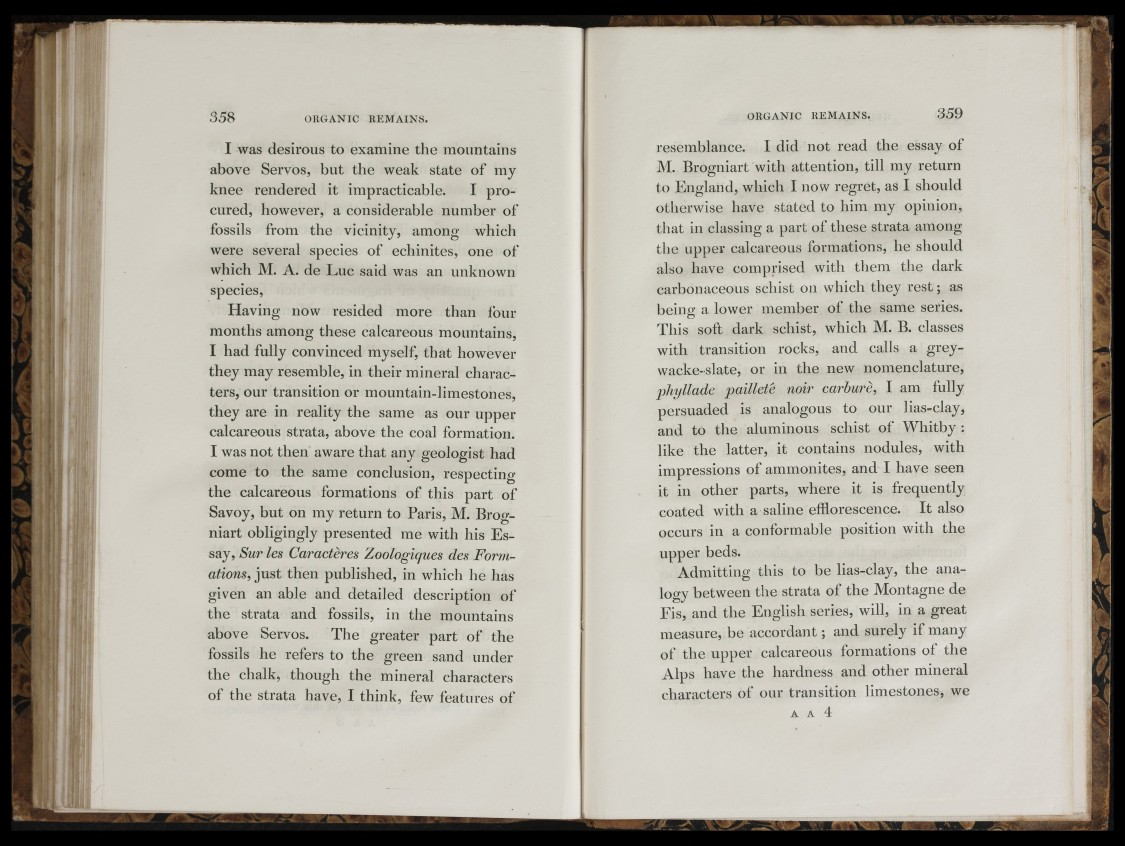
358 O R G A N IC R EM A IN S .
I was desirous to examine the mountains
above Servos, but the weak state of my
knee rendered it impracticable. I procured,
however, a considerable number of
fossils from the vicinity, among which
were several species of echinites, one of
which M. A. de Luc said was an unknown
species,
Having now resided more than four
months among these calcareous mountains,
I had fully convinced myself, that however
they may resemble, in their mineral characters,
our transition or moimtain-limestones,
they are in reality the same as our upper
calcareous strata, above the coal formation.
I was not then aware that any geologist had
come to the same conclusion, respecting
the calcareous formations of this part of
Savoy, but on my return to Paris, M. Brogniart
obligingly presented me with his Essay,
Sur les Caractères Zoologiques des Formations,
just then published, in which he has
given an able and detailed description of
the strata and fossils, in the mountains
above Servos. The greater part of the
fossils he refers to the green sand under
the chalk, though the mineral characters
of the strata have, I think, few features of
resemblance. I did not read the essay of
M. Brogniart with attention, till my return
to England, which I now regret, as I should
otherwise have stated to him my opinion,
that in classing a part of these strata among
the upper calcareous formations, he should
also have comprised with tliem the dark
carbonaceous schist on which they rest ; as
being a lower member of the same series.
This soft dark schist, which M. B. classes
with transition rocks, and calls a grey-
wacke-slate, or in the new nomenclature,
phyllade pailleté noir carburé, I am fully
persuaded is analogous to our lias-clay,
and to the aluminous schist of Whitby :
like the latter, it contains nodules, with
impressions of ammonites, and I have seen
it in other parts, where it is frequently
coated with a saline efflorescence. It also
occurs in a conformable position with the
upper beds.
Admitting this to be lias-clay, the analogy
between the strata of the Montagne de
Fis, and the English series, will, in a great
measure, be accordant ; and surely if many
of the upper calcareous formations of the
Alps have the hardness and other mineral
characters of our transition limestones, we
A A 4
I